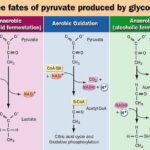AS and A Level Biology 25 Views 1 Answers
Sourav PanLv 9October 29, 2024
State that a polypeptide is coded for by a gene and that a gene is a sequence of nucleotides that forms part of a DNA molecule
State that a polypeptide is coded for by a gene and that a gene is a sequence of nucleotides that forms part of a DNA molecule
Please login to save the post
Please login to submit an answer.
Sourav PanLv 9May 15, 2025
- Definition of a Polypeptide in Relation to a Gene:
- A polypeptide is a chain of amino acids coded for by a gene.
- The sequence of nucleotides in a gene determines the sequence of amino acids in a polypeptide.
- Definition of a Gene:
- A gene is a sequence of nucleotides that forms part of a DNA molecule.
- This sequence encodes information for making:
- A polypeptide chain (protein) via transcription and translation.
- Alternatively, an RNA molecule with functions other than direct protein coding (sometimes referred to as RNA genes).
Supporting Quotes from the Provided Web Search Results:
- Polypeptide Coded for by a Gene:
- “…the sequence of amino acids built according to the sequence of nucleotides forms a polypeptide chain…” (Gene transcription and translation)
- “…one gene being responsible for the assembly of one enzyme, or one polypeptide chain. This is known as the one gene–one enzyme hypothesis.” (Gene transcription and translation)
- Gene as a Sequence of Nucleotides in a DNA Molecule:
- “…a gene is a DNA sequence… that specifies one or more sequence-related RNAs/proteins…” (Putting it all Together: Toward a New Definition of the “Gene”)
- “…a discrete sequence on a DNA molecule that encodes a polypeptide chain.” (The Evolving Definition of the Term “Gene”)
Relationship to Previous Questions:
- This answer reinforces the concept from the previous question about gene mutations potentially altering polypeptides, by highlighting the gene-polypeptide coding relationship.
- It also complements the earlier questions about DNA structure (bases, purines, pyrimidines) and transcription (template strand), as it discusses the functional aspect of genes within the DNA molecule.
0
0 likes
- Share on Facebook
- Share on Twitter
- Share on LinkedIn
0 found this helpful out of 0 votes
Helpful: 0%
Helpful: 0%
Was this page helpful?




